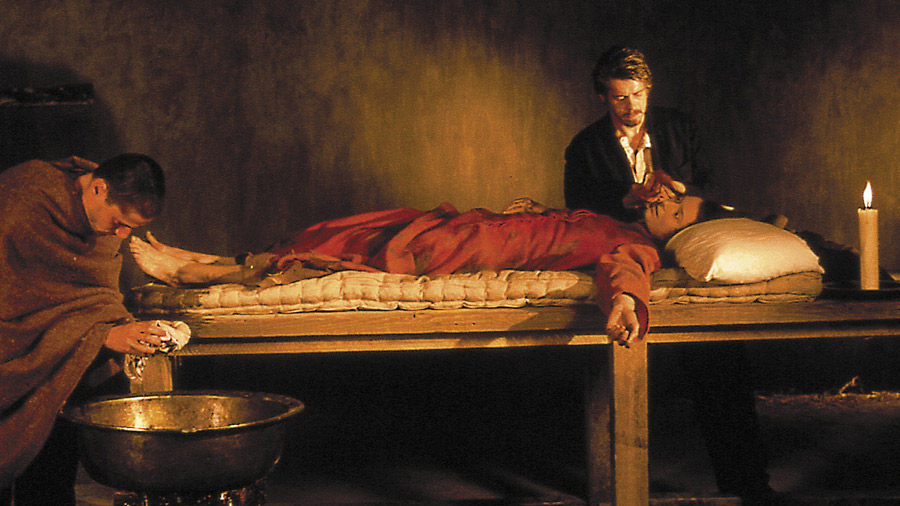
A few years ago I was at Comic Con. I shopped, I saw friends and I took in a few panels. One of these panels was with Sean Bean. When the time came that the audience got to ask the actor about his career the inquiries focused primarily on Bean’s work in the Sharpe series, Goldeneye, The Lord Of The Rings Trilogy, and Game Of Thrones. When I asked Bean about Derek Jarman, he lit up. He related this story of Jarman taking him to a pub and discussing Caravaggio (1986). Then Bean segued into an impromptu eulogy for his late friend.
Caravaggio is the definitive Derek Jarman film in many respects. It’s queer, it is painterly, it’s formally subversive, and it’s tragic. Jarman clearly saw much of himself in his subject (played beautifully by Nigel Terry). Both artists were persecuted by the society that they served and both expressed themselves in highly stylized forms. This pair of image makers, punk and revolutionary, were consumed with a desire to see beyond and bring to the surface a singular expression that was both sensual and brutal.
Jarman’s ability to form his entire film in the style of Caravaggio is uncanny, elevating the film from politically aggressive bio-pic into a meditation on visual aesthetics. The film immerses the spectator in the perspective of Caravaggio; we see everything as Caravaggio would have painted it. Every space seems to fall off into a void of perpetual midnight, every light source is harsh, directional, focused. The identity of the artist, be it Jarman or Caravaggio himself, exists publicly only in their works almost in spite of their status as celebrities in the art world.
The core to Jarman’s film forms around Caravaggio’s relationship with Ranuccio (Sean Bean) and Ranuccio’s girlfriend (Tilda Swinton). Caravaggio sees Ranuccio as a muse, for both his work and his desires. Caravaggio exploits Ranuccio, manipulates him, only to be out maneuvered by the couple. Lena’s androgyny juxtaposes Ranuccio’s classically masculine appearance, queering the visual complex and suggesting Ranuccio’s own repressed femininity. Within this triptych Caravaggio presides as a paternal figure, caring yet predatory. His look is Christ like, suggesting one of his most famous paintings. The fluidity of identity within this schema echoes Jarman’s earlier films, proposing that to create one joins with and loses one’s self within the identity of their subject.
